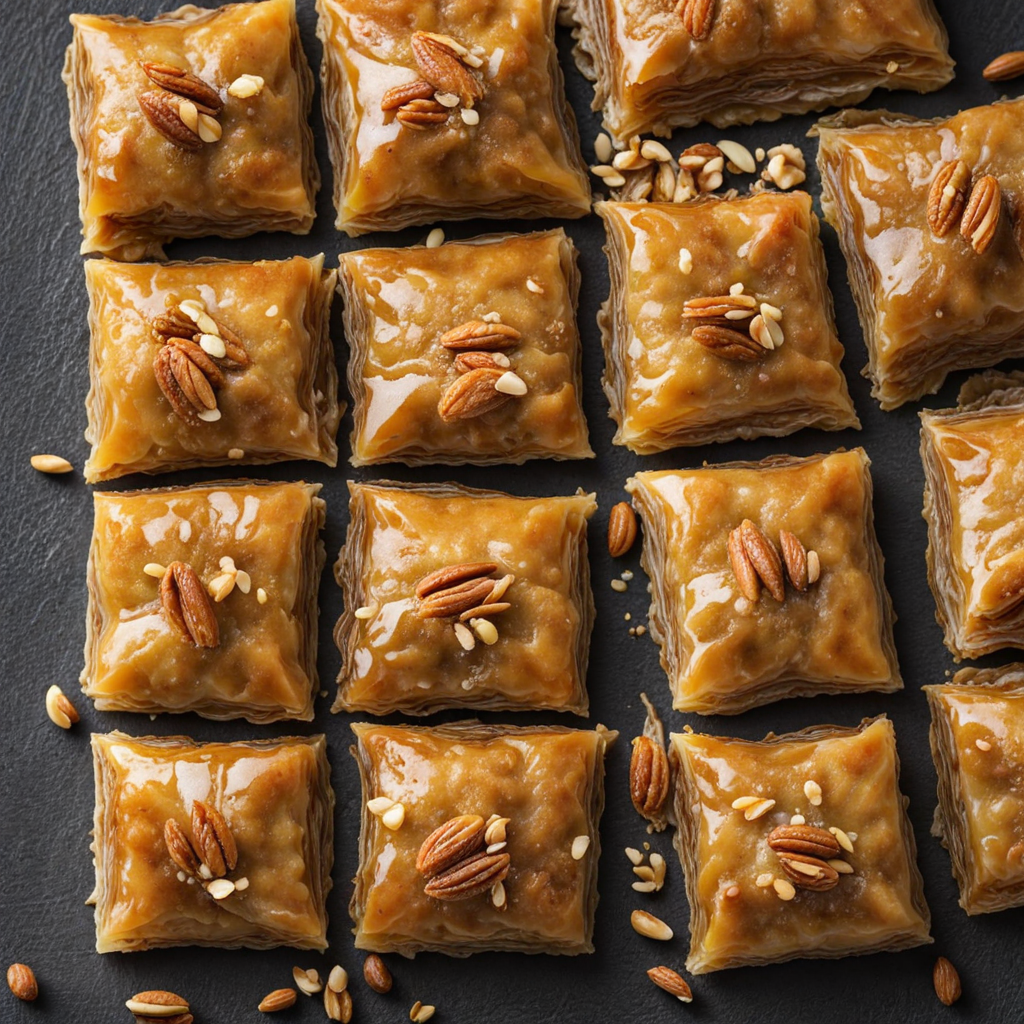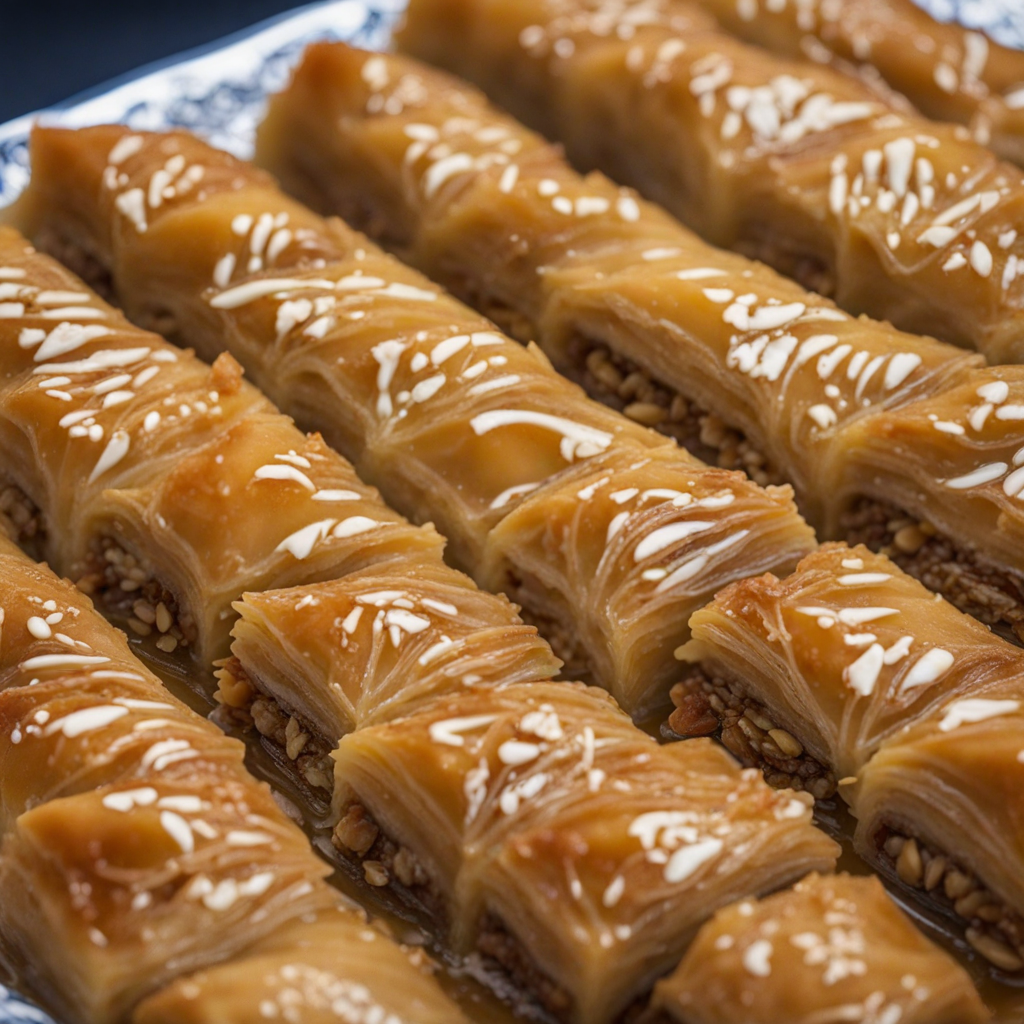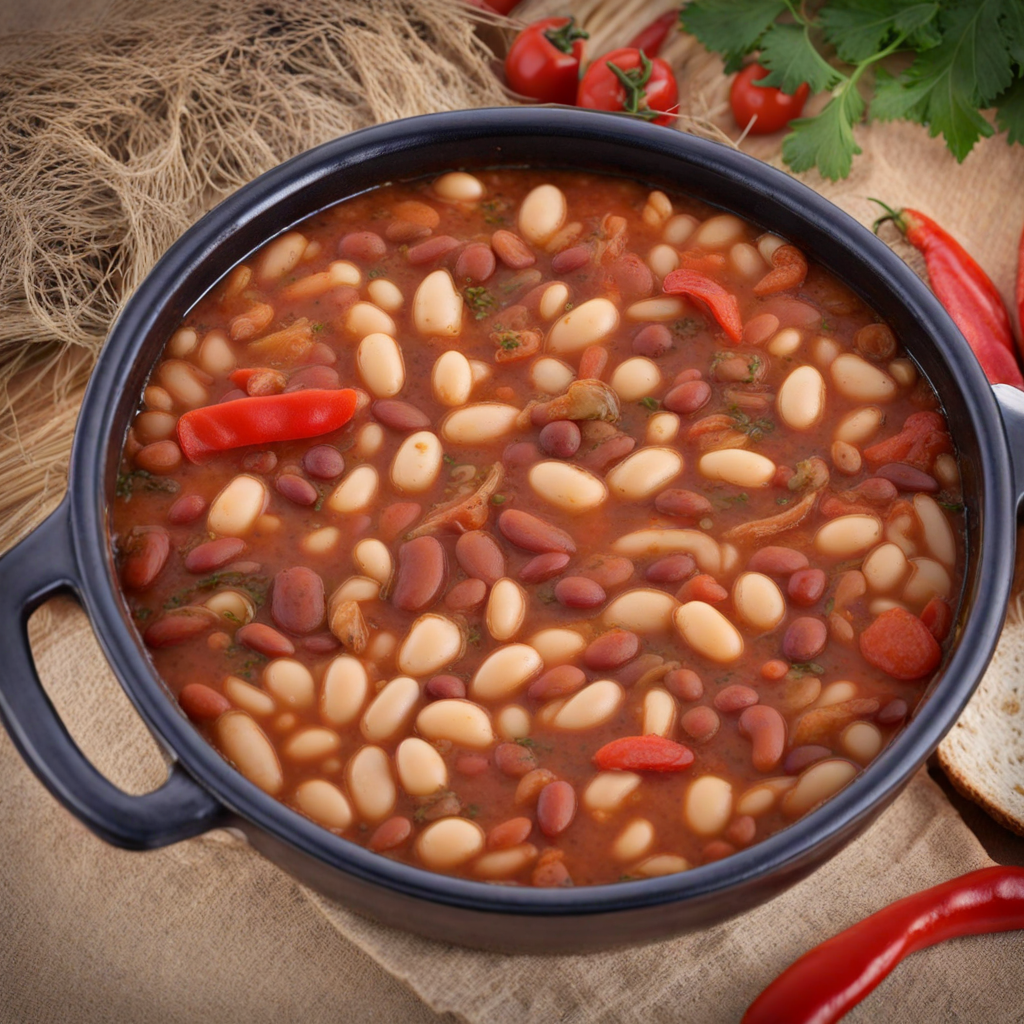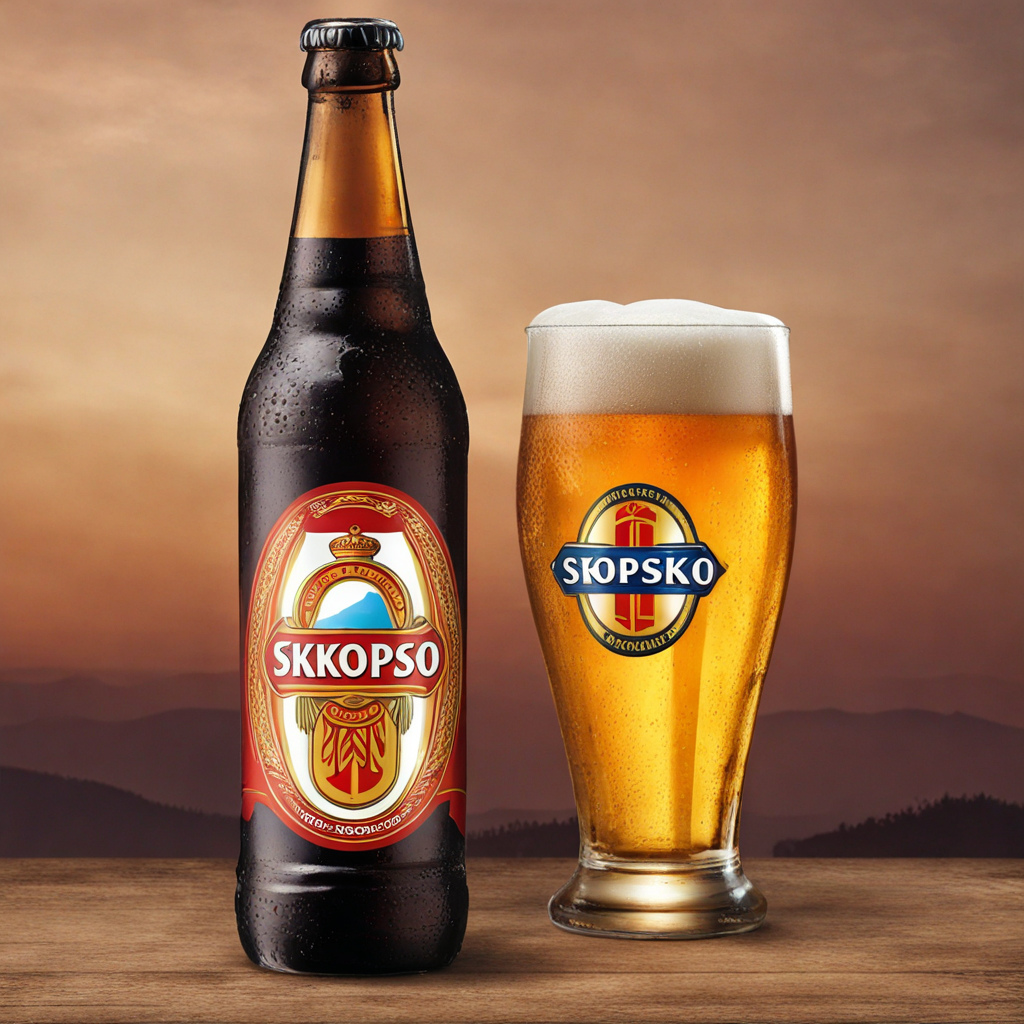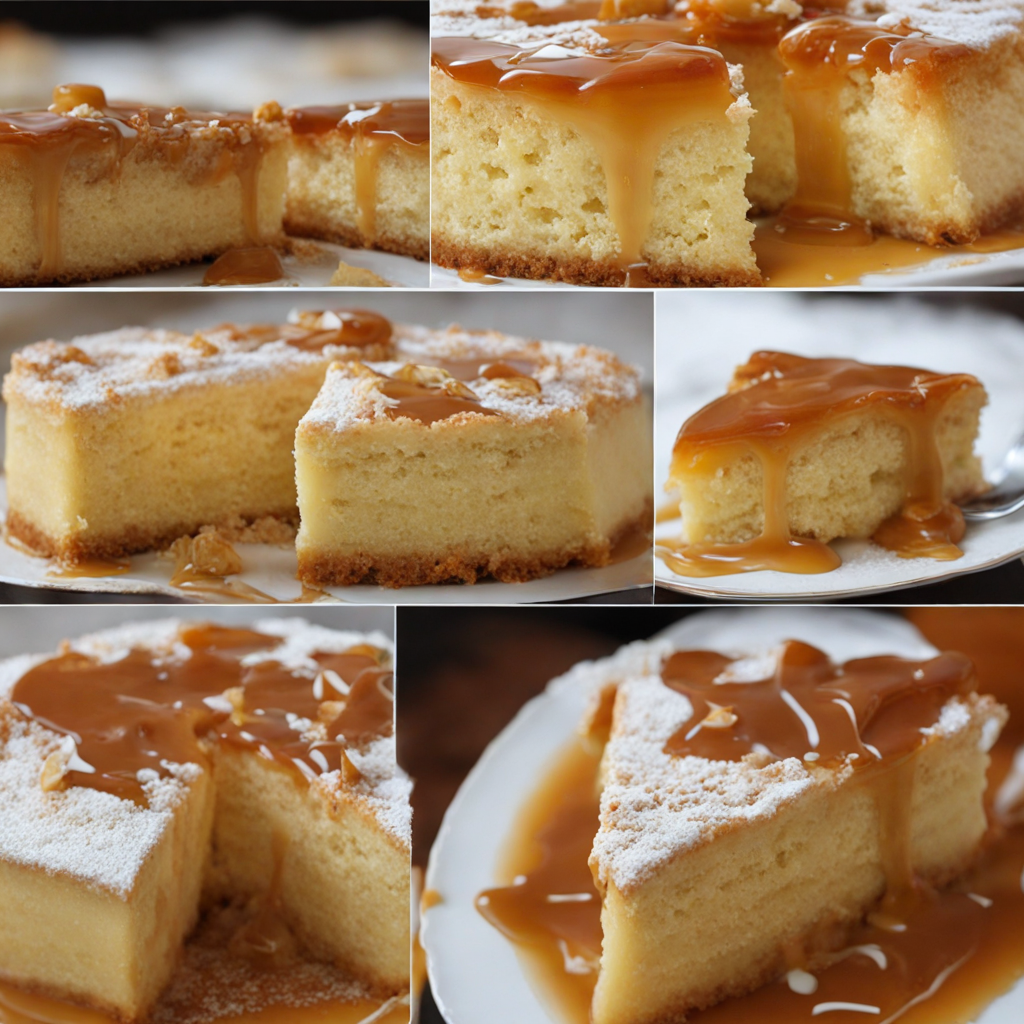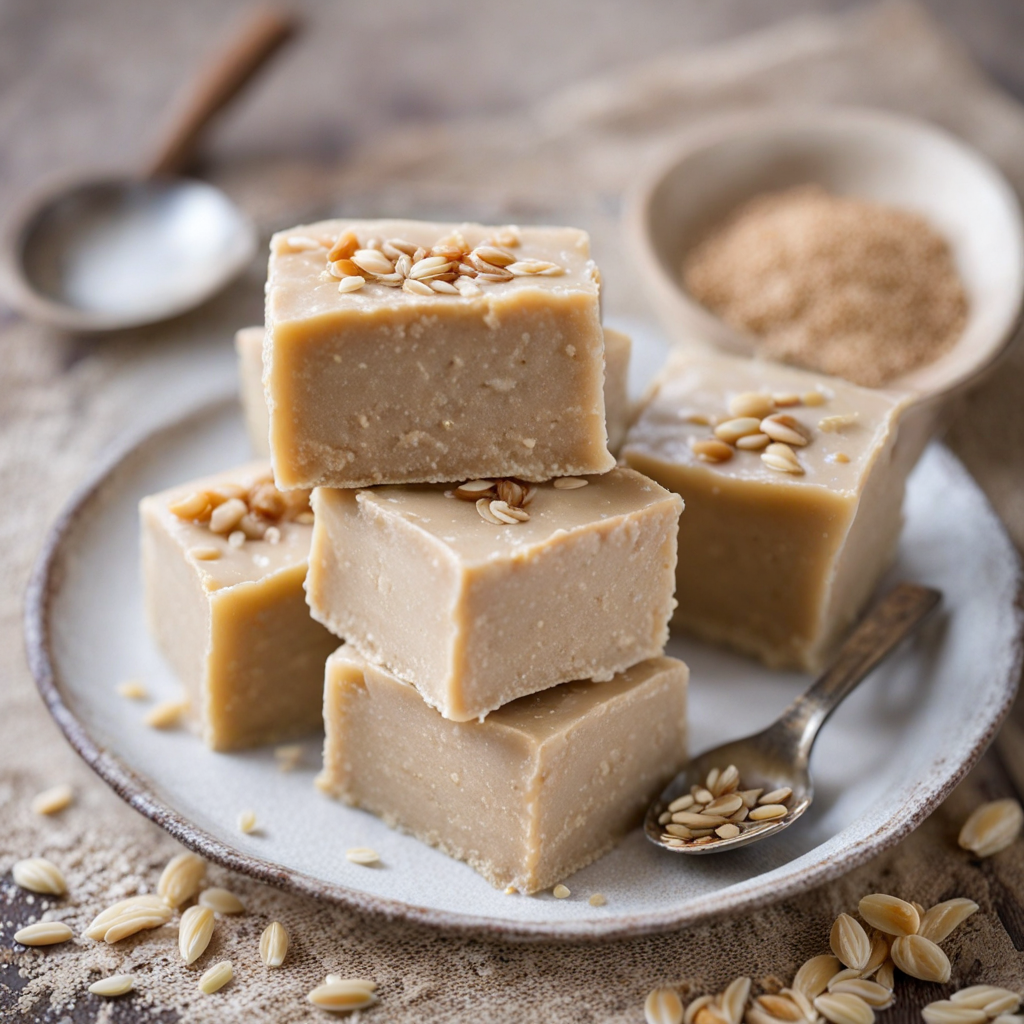Baklava
Baklava is a sumptuous dessert that encapsulates the essence of North Macedonian cuisine, showcasing a delightful interplay of textures and flavors. This indulgent sweet treat is crafted from layers of thin, flaky pastry known as phyllo, which is meticulously brushed with melted butter to achieve a golden, crispy exterior. Each layer is generously filled with a mixture of finely chopped nuts, typically walnuts or almonds, sweetened with sugar and spiced with hints of cinnamon. The resulting symphony of crunchy and tender textures creates a satisfying bite that is hard to resist. Once baked to perfection, the baklava is drenched in a fragrant syrup made from sugar, water, and a splash of lemon juice or honey, which seeps into the layers, enhancing the sweetness and adding a glossy finish. The syrup not only contributes to the dessert's moistness but also balances the richness of the nuts and buttery pastry. In North Macedonia, baklava is often garnished with a sprinkle of finely chopped pistachios or a dusting of powdered sugar, elevating its visual appeal and adding an extra layer of flavor. Enjoying baklava is an experience in itself; the first bite reveals the delicate crunch of the phyllo, followed by the sweet, nutty filling, and a lingering hint of syrupy sweetness on the palate. This beloved dessert is often served during special occasions, gatherings, and holidays, making it a quintessential part of North Macedonian culture. Whether paired with a cup of strong coffee or enjoyed on its own, baklava presents a delightful taste of tradition that invites food lovers to savor its rich history and unparalleled flavors.
How It Became This Dish
The Sweet Legacy of Baklava: A Culinary Journey Through North Macedonia #### Origins Baklava, the iconic sweet pastry made of layers of filo dough filled with nuts and sweetened with honey or syrup, boasts a rich history that transcends borders and cultures. While its precise origins remain a topic of debate among food historians, many trace its roots back to the ancient Assyrians around 800 B.C. who are believed to have layered dough with nuts and honey. Over centuries, this concept evolved through various cultures, especially through the Byzantine Empire and the Ottoman Empire, which played pivotal roles in its development. In the context of North Macedonia, baklava is not just a dessert but a symbol of cultural fusion, reflecting the region's diverse history influenced by Slavic, Mediterranean, and Middle Eastern flavors. The pastry came to the Balkans as a result of the Ottoman Empire's expansion, which dominated the region from the 14th to the 20th centuries. The Ottomans refined baklava into the delicately layered version we recognize today, utilizing local ingredients like walnuts and pistachios, which are prevalent in North Macedonian cuisine. #### Cultural Significance In North Macedonia, baklava holds a cherished place within the culinary landscape, often served during festive occasions, family gatherings, and religious celebrations. It is a staple at weddings, Christmas, and other significant events, symbolizing prosperity, joy, and hospitality. The preparation of baklava is often a communal activity, with families coming together to create this intricate dessert, reinforcing bonds and traditions among generations. The cultural significance of baklava extends beyond its taste; it represents the blending of cultures and culinary practices that characterize North Macedonia. The pastry reflects the rich tapestry of the region's history, where the influences of Ottoman, Mediterranean, and Balkan traditions converge. This amalgamation of flavors and techniques is evident in local variations of baklava, which may feature different nuts, spices, or even regional twists such as the addition of rosewater or citrus zest. #### The Recipe and Preparation The traditional Macedonian baklava is made with layers of thin filo dough, which is meticulously brushed with melted butter and filled with a mixture of finely chopped walnuts or pistachios, sugar, and often a hint of cinnamon. The layering process is crucial, as the delicate balance of dough and filling creates the signature texture that baklava is known for. Once assembled, the baklava is cut into diamond or square shapes before being baked to a perfect golden-brown. The finishing touch comes in the form of a sweet syrup, typically made from water, sugar, and lemon juice, which is poured over the hot baklava immediately after it comes out of the oven. This syrup seeps into the layers, infusing the pastry with moisture and sweetness, creating a delightful contrast to the crunchy texture of the nuts. Some variations may include honey or flavored syrups, adding an extra layer of complexity to the dessert. #### Evolution over Time As North Macedonia navigated the waves of history, baklava evolved alongside the nation's identity. The post-Ottoman era saw the emergence of national pride and cultural revival, which influenced culinary practices. Chefs and home cooks began to experiment with baklava, integrating local ingredients and modern techniques while still preserving the traditional essence of the dessert. Contemporary Macedonian baklava often reflects a balance between tradition and innovation. While the classic recipe remains popular, variations have emerged that cater to modern tastes, such as using alternative sweeteners or incorporating new flavors like chocolate or fruit. This adaptability has allowed baklava to maintain its relevance in Macedonian cuisine, ensuring that it remains a beloved dessert across generations. The globalization of food culture has also contributed to the spread of baklava beyond North Macedonia's borders. Today, baklava is enjoyed in various forms around the world, from Middle Eastern sweet shops to gourmet restaurants. Its universal appeal lies in its rich flavors, intricate textures, and the nostalgia it evokes for those who have grown up with it. #### Baklava in the Modern Era In recent years, there has been a renewed interest in traditional foods and culinary heritage, prompting a resurgence in the popularity of baklava. Chefs and home cooks alike are embracing the art of making baklava from scratch, often sharing their recipes and techniques through social media platforms. This revival has not only preserved the traditional methods but has also sparked creativity, leading to innovative interpretations of the classic dish. Moreover, baklava has become a symbol of culinary diplomacy, representing a bridge between cultures. Food festivals and cultural events often showcase baklava, allowing people from different backgrounds to come together and celebrate the shared joy of food. In North Macedonia, baklava is often featured in international food fairs, highlighting the country's rich culinary heritage and inviting others to experience the flavors of the region. #### Conclusion Baklava's journey through history is a testament to the power of food as a cultural connector. From its ancient origins to its role in modern Macedonian cuisine, baklava embodies the spirit of hospitality, celebration, and community. It serves not only as a delicious dessert but as a reminder of the intricate tapestry of cultures that have shaped North Macedonia's identity. As people continue to explore and embrace the diverse culinary traditions of the world, baklava will undoubtedly remain a beloved symbol of sweetness, unity, and the rich flavors of a shared history. Whether enjoyed in a bustling café in Skopje or served at family gatherings, baklava continues to delight palates and nourish connections, making it an enduring and cherished part of North Macedonia's culinary legacy.
You may like
Discover local flavors from North Macedonia


